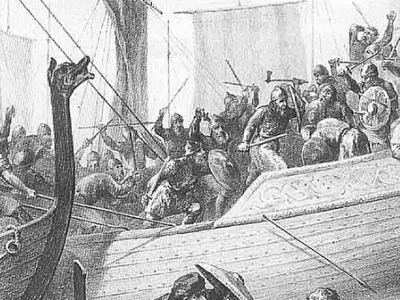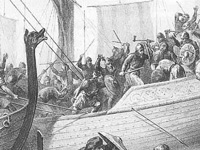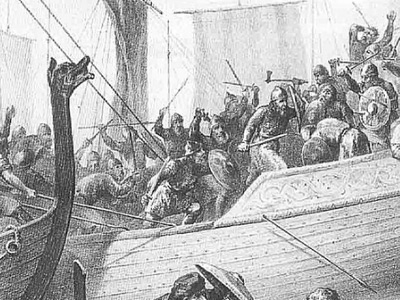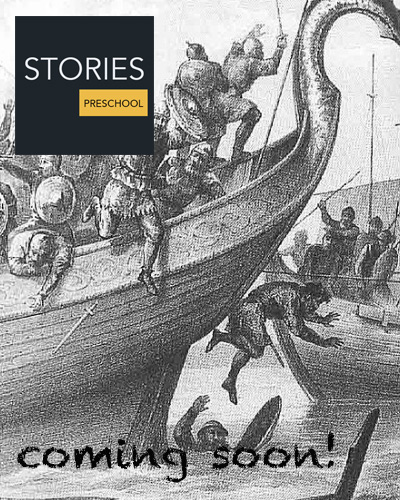Battle of Svolder (1000)

Composition of the fleets
The Norse sources agree that Olaf Tryggvason fought against overwhelming odds in the battle. Fagrskinna, for example, says that he had "only a small force", and that the sea around him was "carpeted with warships". The sources which specify the number of warships all agree that Olaf Tryggvason had 11 vessels but they give various numbers for the allied fleets. Most sources cite the Danish and Swedish forces as equal in size, with the exception of Rekstefja.
Though the sagas agree that Olaf Tryggvason had only 11 ships in the battle, some of them quote a verse by Halldórr the Unchristian saying that Olaf had 71 ships when he sailed from the south. The sagas explain the discrepancy by saying that some of the 71 ships belonged to Jarl Sigvaldi, who deserted Olaf, and that others sailed past the trap at Svolder before it was sprung.
The sagas describe three of the ships in Olaf Tryggvason's fleet. According to Heimskringla, the Crane was a large swift-sailing warship with thirty rowers' benches, high in stem and stern. It was commissioned by King Olaf and used as his flagship for some time.
Olaf confiscated the second of his great ships from a pagan he had tortured to death for refusing to convert to Christianity. King Olaf "steered it himself, because it was a much larger and finer ship than the Crane. Its stem had a dragon's head on it, and on its stern, a crook shaped like a tail; and both sides of the neck and all the stern were gilded. That ship the king called the Serpent, because when the sail was hoisted it was to look like the wing of a dragon. That was the finest ship in all Norway."
Olaf's third flagship, the Long Serpent, was a legendary vessel mentioned in several anecdotes in the sagas.
It was constructed as a dragon ship, on the model of the Serpent which the king had taken along from Hálogaland; only it was much larger and more carefully wrought in all respects. He called it the Long Serpent and the other one, the Short Serpent. The Long Serpent had thirty-four compartments. The head and the tail were all gilt. And the gunwales were as high as those on a seagoing ship. This was the best ship ever built in Norway, and the most costly.
The only allied ship described is Jarl Eirik's Iron Ram. According to Fagrskinna it was "the biggest of all ships". Heimskringla gives more detail:
Earl Eirík owned a mighty big ship which he was accustomed to take on his viking expeditions. It had a beak [or ram] on the upper part of the prow, fore and aft, and below that heavy iron plates as broad as the beak itself, which went down to the waterline.
HISTORY

RESOURCES
This article uses material from the Wikipedia article "Battle of Svolder (1000)", which is released under the Creative Commons Attribution-Share-Alike License 3.0.
© Stories Preschool. All Rights Reserved.









